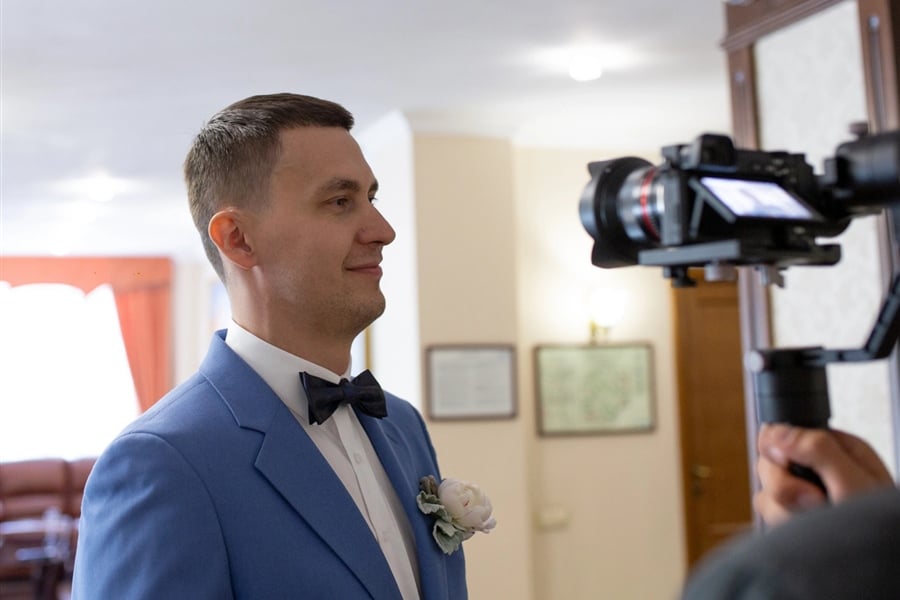
Your wedding day will fly by in a whirlwind of emotions, laughter, and unforgettable moments. Whilst you'll be caught up in the magic of it all, your videographer needs a well-planned timeline to ensure they capture every significant detail that tells your unique love story. Understanding when your videographer should begin and conclude their coverage is crucial for creating a comprehensive wedding film that you'll treasure for decades to come.
Pre-Ceremony Coverage: Setting the Scene
Bridal Preparations (2-3 Hours Before Ceremony)
The most popular starting point for wedding videography is during bridal preparations. This typically begins 2-3 hours before your ceremony, capturing the anticipation and excitement as you and your wedding party get ready. Your videographer will document the intricate details of your dress, shoes, and accessories, alongside candid moments of laughter, nerves, and final touches.
Many couples opt to include both bride and groom preparations, which requires coordination between multiple videographers or strategic timing. The getting-ready footage provides essential context for your wedding story and showcases the emotional build-up to your ceremony.
The First Look (Optional)
If you're planning a first look session, this intimate moment deserves dedicated coverage. Your videographer should arrive early enough to capture both partners' emotions leading up to this private reveal, ensuring they're positioned discreetly to document authentic reactions without intrusion.
Ceremony Coverage: The Heart of Your Story
Pre-Ceremony Arrivals
Your videographer should be positioned and ready at least 30 minutes before your ceremony begins. This allows them to capture guests arriving, the groom’s entrance, and those precious moments of anticipation. The processional, including your entrance, represents one of the most emotionally charged moments of your day and requires careful positioning and preparation.
The Complete Ceremony
From the opening words to the final kiss, every element of your ceremony should be documented. Your videographer needs to capture not only the key moments—vows, ring exchange, and first kiss—but also the reactions of your loved ones. Many couples request audio recording of their vows, which requires proper equipment setup beforehand.
Reception Timeline: Celebrating Your Union
Cocktail Hour and Reception Entrance
The period between the ceremony and reception often includes cocktail hour, couple portraits, and family photographs. Your videographer might take a brief break during formal photography sessions or use this time to capture guest interactions and venue details.
Your reception entrance marks the beginning of the celebration phase, and your videographer should be ready to document your arrival, first dance, and the energy of your guests as the party begins.
Key Reception Moments
Essential reception coverage includes speeches, cake cutting, parent dances, and bouquet toss. Your videographer should remain alert throughout the evening to capture spontaneous moments of joy, laughter, and celebration that occur between formal events.
Duration Options: Finding Your Perfect Package
Half-Day Coverage (4-6 Hours)
This option typically covers ceremony preparations through to the first dance or speeches. It’s suitable for couples who want essential moments documented without extended reception coverage.
Full-Day Coverage (8-10 Hours)
The most comprehensive option, covering preparations through to the end of reception festivities. This ensures complete documentation of your entire wedding day story.
Extended Coverage (10+ Hours)
Some couples opt for extended coverage that includes rehearsal dinner footage or next-day celebrations, creating a more complete wedding weekend documentary.
When Should Coverage End?
Traditional Ending Points
Most couples choose to conclude videography after key reception events such as speeches, cake cutting, and first dances. This typically occurs 2-3 hours into the reception, allowing guests to relax and celebrate more intimately.
Extended Reception Coverage
Some couples prefer coverage through to the last dance or venue departure. This captures the full energy of your celebration but requires careful consideration of your videographer’s stamina and your budget.
Practical Considerations
Consider your venue’s noise restrictions, guest comfort levels with filming, and the natural flow of your celebration when determining end times. Many receptions shift from formal celebration to casual dancing, and excessive filming during late-night festivities can feel intrusive.
Maximising Your Investment
Communication is Key
Discuss your priorities with your videographer well in advance. If specific moments hold particular significance, such as cultural traditions or surprise elements, ensure these are clearly communicated and planned for.
Timeline Coordination
Work closely with your wedding planner or coordinator to ensure your videographer understands the day’s schedule. Unexpected delays or changes can impact coverage, so flexibility and communication are essential.
Quality Over Quantity
Remember that skilled videographers can create compelling narratives even with shorter coverage periods. Focus on ensuring the most meaningful moments are captured rather than simply maximising hours of footage.
Your wedding video will serve as a timeless reminder of your special day, allowing you to relive emotions and moments that photographs alone cannot capture. By carefully planning your videography timeline, you ensure that your love story is told completely and beautifully, creating a treasured keepsake that grows more precious with each viewing.
Check out our amazing Videographers right HERE📽️


